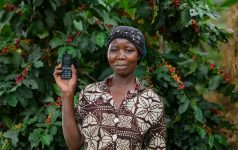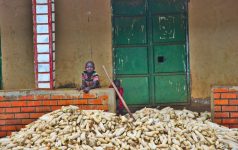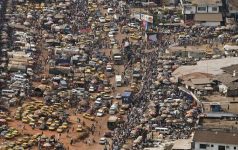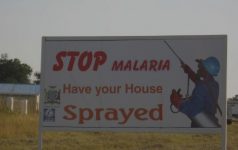Mosquito-borne diseases, like Zika and Dengue, now spread faster and farther, carried by people travelling long distances. These diseases constitute a threat to public health, with 746,000 reported cases of Dengue in Brazil in 2015 and over half occurring in the State of São Paulo. Public health officials must understand patterns of human mobility to effectively plan sanitarian and intervention campaigns. In São Paulo, the data used to predict human mobility – travel reports and census data – can often be inaccurate or outdated, restricting health officials’ ability to effectively combat the spread of Zika and Dengue.
At DDI, we serve public health officials by assessing human mobility through anonymized mobile phone usage. Analysis of this anonymized mobile phone usage can tell us where groups of people live, work, and how they go usually from one place to another. By aggregating and combining this information with disease incidence data, we can accurately predict upcoming outbreaks, aiding Brazilian public health officials to optimize targeted public safety information campaigns and resource allocation to areas most at risk for renewed disease outbreaks.
Armed with the technology to fill the data gap in Zika and Dengue prevention and intervention, DDI has partnered with the Vector Control Authority (SUCEN) and the Epidemiological Surveillance Center (CVE) of the State of São Paulo with a Zika and Dengue Surveillance tool with advanced epidemiological model.
Our Partners: Endemics Control Authority and the Epidemiological Surveillance Center of the State of São Paulo
The Vector Control Authority (SUCEN) and the Epidemiological Surveillance Center (CVE) play complementary roles in disease prevention in São Paulo. SUCEN follows the evolution of infectious diseases by assessing the locations of new incidence reports and plans public health campaigns accordingly. They further collect and centralize disease incidence reports from local health facilities. CVE then prevents the spread of mosquitos by running prevention and eradication campaigns (such as disinfecting buildings or evacuating standing water), using SUCEN’s incidence data to prioritize their work.
What We Built: Zika and Dengue Surveillance Tool with Advanced Epidemiological Model
To answer the State of Sao Paulo’s specific set of challenges, we have brought together Telefonica Brazil’s constantly updating stream of call records and CVE’s monthly reporting of Zika and Dengue cases to develop an interactive online tool that monitors the risk of renewed Zika and Dengue outbreaks across the State of São Paulo. Our interactive online tool provides the end user with dynamic maps of near-real-time anonymized, aggregated data that highlights how frequent travel destinations evolve alongside geographical concentrations of disease outbreaks, and predict the coming evolution of the diseases.
The tool is built to answer questions identified by CVE and SUCEN as essential to their decision-making process, such as:
- How are incidence and prevention campaigns correlated over time?
- Where are new cases of Zika and Dengue expected in the next month?
- How effective were SUCEN’s previous disinfection campaigns?

The above two maps can show the correlation between any two relevant indicators defined by our end-user. In this case, the maps compare past incidents (left) with the altitude (right) in the city of Ribeirão Preto, highlighting the reverse correlation between the indicators.
The Results:
Thanks to our tool, district health officials in São Paulo can now:
• Act in prevention, where they used to work in response.
• Assess the impact of their actions in order to know how to invest their resources.
• Monitor the key parameters influencing disease incidence.








